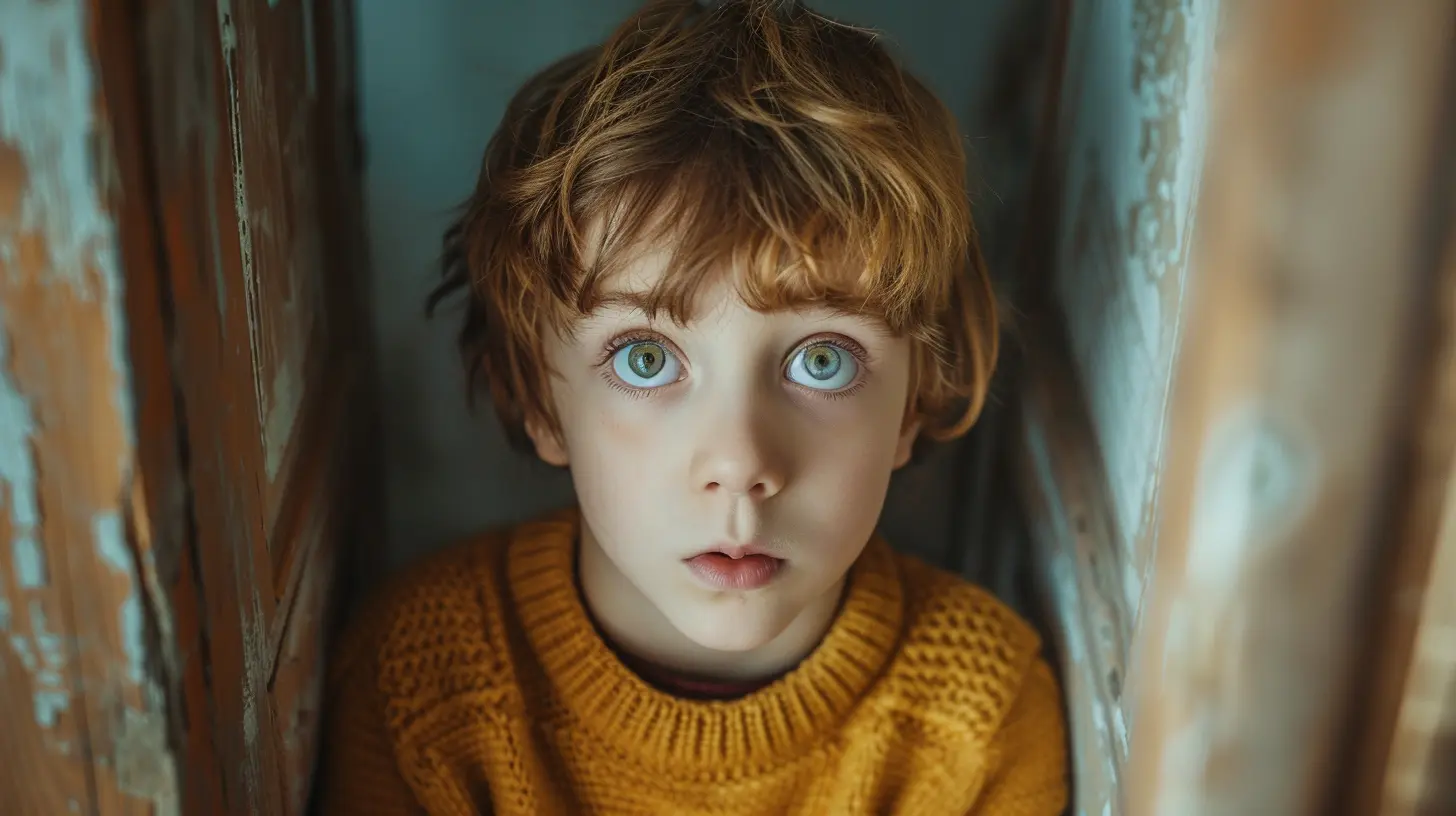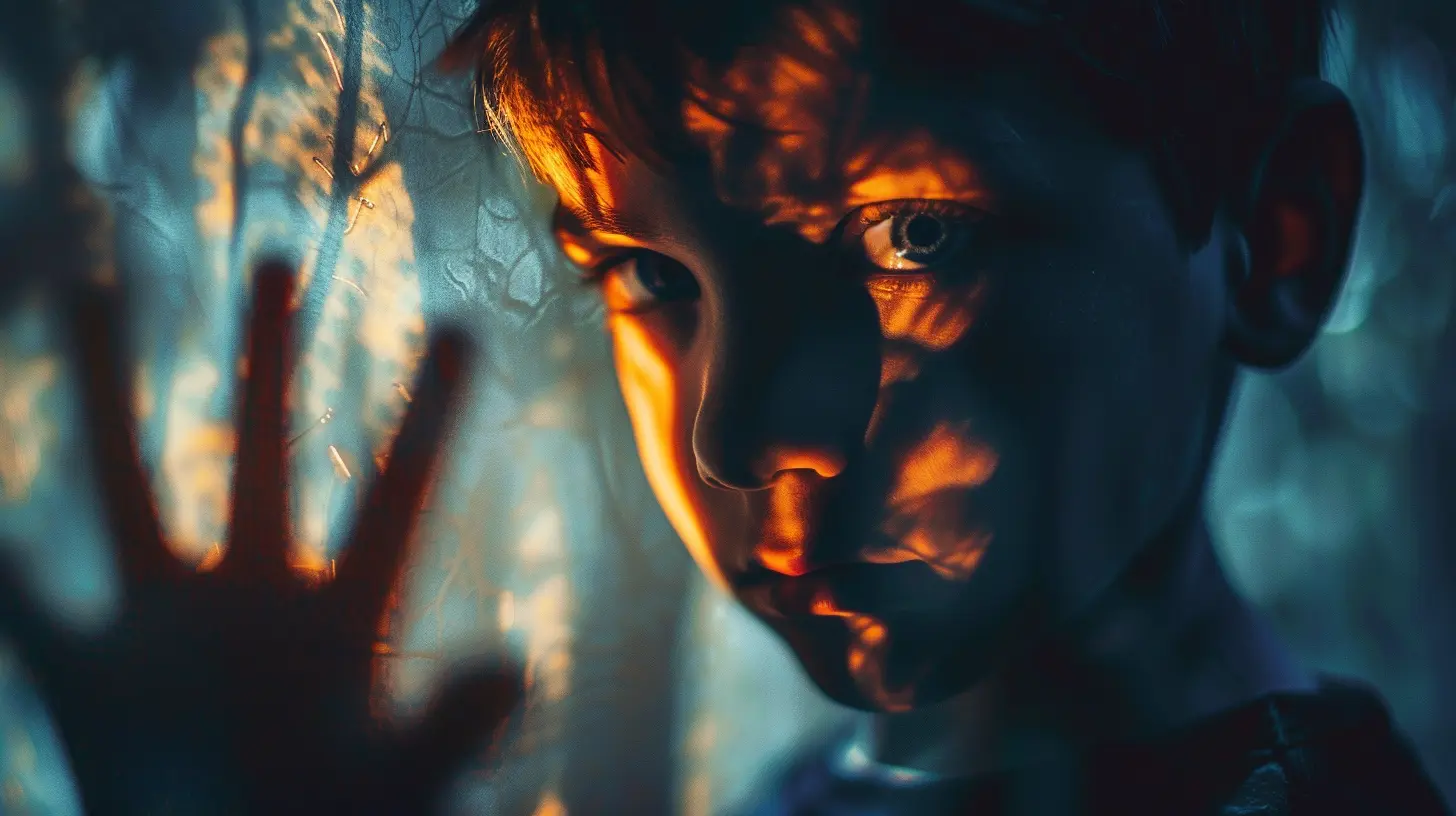Helping Children Overcome Fears and Anxiety
14 June 2025
Childhood is a magical time—but let's be real, it's also pretty scary sometimes. Monsters under the bed, the first day of school, thunderstorms, or even just walking into a new room full of strangers can send a kid’s heart racing. As parents, guardians, or caregivers, it’s tough seeing those wide-eyed looks of terror and not knowing exactly what to say or do.
But here’s the good news: You’re not helpless. You CAN help your child gain courage, reduce anxiety, and develop the emotional tools they'll need for the rest of their lives. Let’s dive deep into understanding and tackling childhood fears and anxiety, one thoughtful step at a time.
Understanding the Roots of Fear in Children
Let’s start by saying this: Fear is NORMAL.It’s a built-in survival instinct. For a child, who's still trying to make sense of the world, many things feel uncertain—or downright overwhelming. That’s not a character flaw or a parenting failure; it’s just part of growing up.
Common Childhood Fears by Age Group
Knowing what kinds of fears are typical at each stage can help you respond with compassion rather than surprise.- Toddlers (1-3 years): Loud noises, separation from parents, strangers, animals.
- Preschoolers (3-5 years): Darkness, imaginary creatures (hello, monsters!), being alone.
- School-age kids (6-12 years): Academic pressures, making friends, fear of injury or death.
- Tweens and Teens (13+ years): Social acceptance, failure, future uncertainty, global events.
Does this mean every kid will fear all these things? Absolutely not. But if your child is dealing with fears that feel “normal,” you're not alone.
Anxiety vs. Normal Fear: What’s the Difference?
Now here’s the tricky part—how do you know whether your child is going through an age-appropriate fear… or showing signs of anxiety?Quick Rule of Thumb
- Fear is situational and usually passes.- Anxiety sticks around, can grow over time, and may interfere with daily life.
Think of fear like a fire alarm—it rings during danger and stops when the danger is over. Anxiety? It’s like a faulty alarm that keeps going off, even when there’s no fire.
Some signs of anxiety in kids include:
- Constant worries (“What if I fail the test?” “What if you get hurt?”)
- Avoiding normal activities
- Physical symptoms (tummy aches, headaches, trouble sleeping)
- Meltdowns or irritability when routines are disrupted
If you're seeing these signs often, anxiety could be the culprit.
Step-by-Step: Helping Children Overcome Fears and Anxiety
Okay, so your little one is struggling. Now what? Don’t panic. You’ve got tools at your fingertips. Let’s go through them step-by-step.1. Listen First, Talk Later
Before you jump into "fix-it" mode, take a moment to listen. Like really listen.Sit down with your child and ask open-ended questions like:
- “What are you afraid of?”
- “Tell me what you're thinking when that happens.”
- “Where do you feel it in your body?”
Validate their emotions—no matter how irrational they may seem. Saying “That’s silly, don’t be afraid of the dark!” only teaches them to bottle up their feelings. Instead, try something like, “I know it feels scary right now. Let’s figure it out together.”
2. Label the Fear
Naming the fear helps shrink it.Seriously—giving it a name takes it from this shadowy monster in their head to something manageable. You might even give it a funny name to disarm it—“Ah yes, here comes Nervous Nelly again!”
By making the fear feel less like an unknown enemy and more like a visitor, your child gains emotional distance and power.
3. Teach Calming Techniques
Kids don’t show anxiety the same way adults do. They might throw tantrums, freeze up, or complain about tummy aches. So, teaching them tools to cope when anxiety strikes is a huge win.Try these easy techniques:
- Deep Breathing: “Smell the flower, blow out the candle.” It’s simple and fun.
- 5-4-3-2-1 Game: Name 5 things you can see, 4 you can touch, 3 you can hear, 2 you can smell, 1 you can taste. It grounds them when anxiety spirals.
- Use of a worry box/journal: Let them write or draw their fears, then "lock" them away.
4. Normalize and Share Your Own Experiences
Let them know that fear is part of life. Share your own stories—“I used to be really scared of the dark too!” or “I still feel nervous before big meetings.”This reassures your child that emotions are normal and temporary, not something to hide or be ashamed of.
5. Create a Brave Behavior Plan
Small wins lead to big confidence.If your child is afraid of dogs, don’t shove them in front of one and expect a miracle. Gradual exposure works wonders—start by looking at dog pictures, then watching videos, followed by seeing one in a yard, and eventually petting a calm, friendly pup.
This step-by-step ladder is called exposure therapy, and it’s backed by science.
Make sure to celebrate every little success on the way up. A sticker chart or a simple “I’m proud of you!” goes further than you think.
6. Avoid Avoidance (Really!)
Big one here: Letting your child avoid what makes them anxious may feel like you're protecting them—but actually, you’re keeping the fear alive.If your kiddo says, “I don’t want to go to the party, I’m scared,” and you say, “Okay, you can stay home,” they learn that avoiding the fear works. Problem is—it doesn’t go away. It just grows legs and follows them.
Help them face fears gradually, with support and encouragement, not avoidance.
7. Keep Routine and Sleep Sacred
Anxiety LOVES chaos. So one of the best things you can do? Keep the day predictable. Stick to mealtimes, bedtimes, and rituals like storytime or brushing teeth.And sleep? Oh man, that’s a game-changer. Lack of sleep makes anxiety worse—for everyone, but especially for kids.
So prioritize good sleep hygiene:
- Keep screens out of the bedroom
- Use nightlights if they help
- Have winding-down routines
8. Limit Screen Time and Media Exposure
Too much screen time—especially when it involves scary, violent, or anxiety-triggering content—can feed fear and stress. And let’s not even talk about the endless stream of bad news online these days.Set limits, use parental controls, and choose calming or positive content when possible.
9. When to Seek Help
Sometimes, fear and anxiety are more than just growing pains. If your child’s quality of life is taking a hit—like they won’t go to school, stop eating well, or can’t sleep—it’s time to bring in reinforcements.You can talk to:
- Your child’s pediatrician (great first step)
- A child psychologist or therapist
- School counselors and support staff
There’s no shame in asking for help. In fact, it’s a bold, brave move—for both you and your child.
Helping Your Child Build Resilience
Courage isn’t about being fearless. It’s about feeling scared and doing the thing anyway. That’s the lesson we want to teach here.You can help build resilience in everyday life by:
- Praising effort over outcome: “You were so brave to try that!” instead of "You did it perfectly!"
- Helping them solve problems instead of solving for them
- Letting them make mistakes—and learn from them
- Modeling calm behavior when things go wrong
What NOT to Do
Let’s be honest, we all mess up sometimes. But here are a few things to avoid when managing your child’s fears:- Don’t minimize: Saying “There’s nothing to be afraid of” won’t help. They FEEL afraid. That’s what matters.
- Don’t tease or shame: Even in good humor. You’re trying to build trust and safety, not embarrassment.
- Don’t bribe: It reinforces the idea that their fear is something big and scary, deserving of a “reward” for facing it.
Final Thoughts
Helping children overcome fears and anxiety isn’t about snapping your fingers and making it disappear. It’s about walking beside them, showing up, and saying, “I see you, I hear you, and we’ll get through this together.”Their minds are still growing. Their hearts are still learning. And with your calm guidance, they’ll not only face what scares them—they’ll grow stronger because of it.
Remember: You don't need to be perfect. Just be present.
all images in this post were generated using AI tools
Category:
Parenting TipsAuthor:

Tara Henson
Discussion
rate this article
2 comments
Faenor Erickson
Great article! It’s essential to validate our children's feelings while also encouraging them to face their fears gradually. Offering a supportive environment and practicing relaxation techniques together can make a significant difference. Remember, patience and consistency are key in helping them build resilience.
June 19, 2025 at 4:18 PM

Tara Henson
Thank you for your thoughtful insights! I completely agree—validation, support, and consistent practice are crucial in helping children build resilience against their fears.
Rose Benton
Unlocking their courage: whispers of bravery await in shadows.
June 16, 2025 at 2:38 PM

Tara Henson
Thank you! Embracing vulnerability is a key step in helping children find their courage and navigate their fears.


